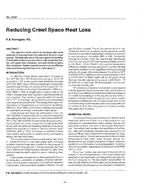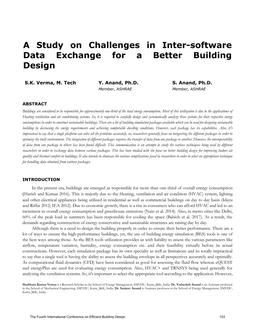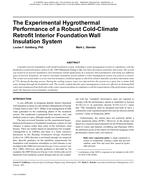A new sustainability focused approach to the building design process has been proposed where first mechanical engineers design the building energy systems, next the civil engineers determine the most sustainable construction materials and finally the architect works within these constraints to come up with the building layout. The first step in the proposed design process was started on a building to be located at McMaster University in Southern Ontario, the proposed Engineering Center for Experiential Learning (ExCEL). To meet the Center’s objectives, which is to provide hands on learning experience, student teams worked on designing the energy related components of the building to see if it was possible to reach a net-zero energy building. Split into two stages, the design first focused on determining the building’s thermal and electrical loads and reducing these through conservation measures, as discussed in the Part 1 paper. The second phase, which is the discussion of this paper, was to analyze the various site generation and HVAC systems that could meet the predetermined building loads.
To achieve the goal of net-zero energy, site generation from renewable resources has to be larger than all the building loads. For generation of electrical energy on site the renewable resources of wind, geothermal and solar were considered. It was found that solar photovoltaic system was the only practical form of electrical generation. With a system selected for the electrical loads, the thermal loads of the building had to be met by an HVAC system. Besides a conventional natural gas furnace and roof mounted cooling system, a geothermal heat pump system was analyzed. It was found that with a high performance geothermal system and a novel continuous surface solar array, it was possible to meet all the buildings electrical and thermal loads with electricity generated on site over the course of a year, allowing for the net-zero energy designation.
In addition, a tri-generation system consisting of a micro natural gas turbine with heat recovery on the exhaust and an absorption chiller system was considered for meeting the electrical, heating and cooling loads of the building. Due to the use of non-renewable natural gas, the system could not achieve the net-zero energy goal. However, the system allowed for a more sustainable use of natural gas due to the higher efficiently of the natural gas consumed over conventional natural gas power plants. Therefore the tri-generation was considered a comparable alternative for showcasing sustainable technologies within the building for the students and general public to learn from.
Product Details
- Published:
- 2011
- Number of Pages:
- 8
- File Size:
- 1 file , 340 KB
- Product Code(s):
- D-SA-12-C036
- Note:
- This product is unavailable in Russia, Belarus


